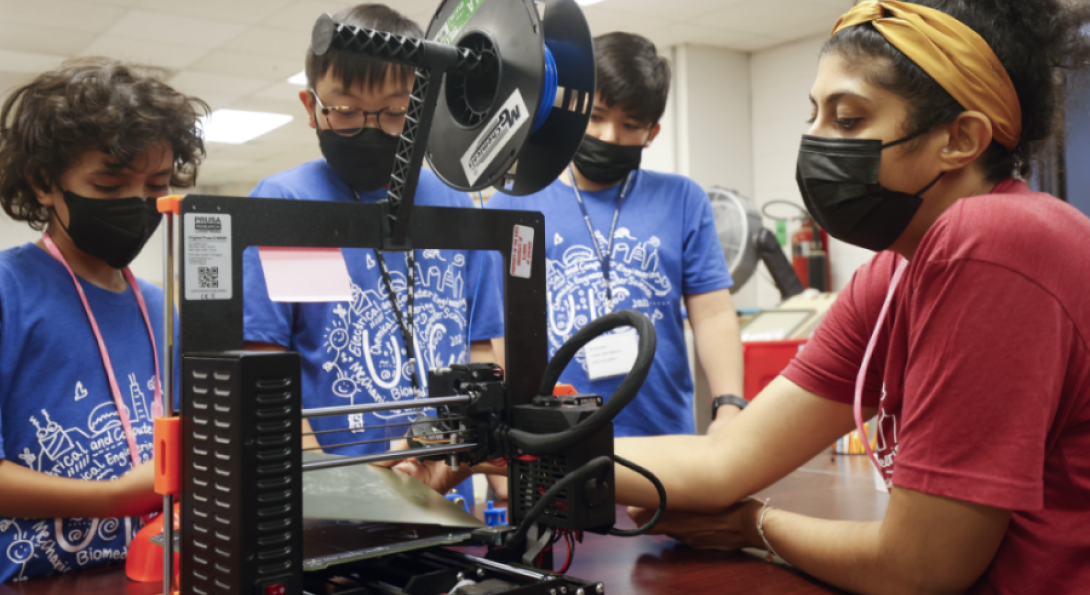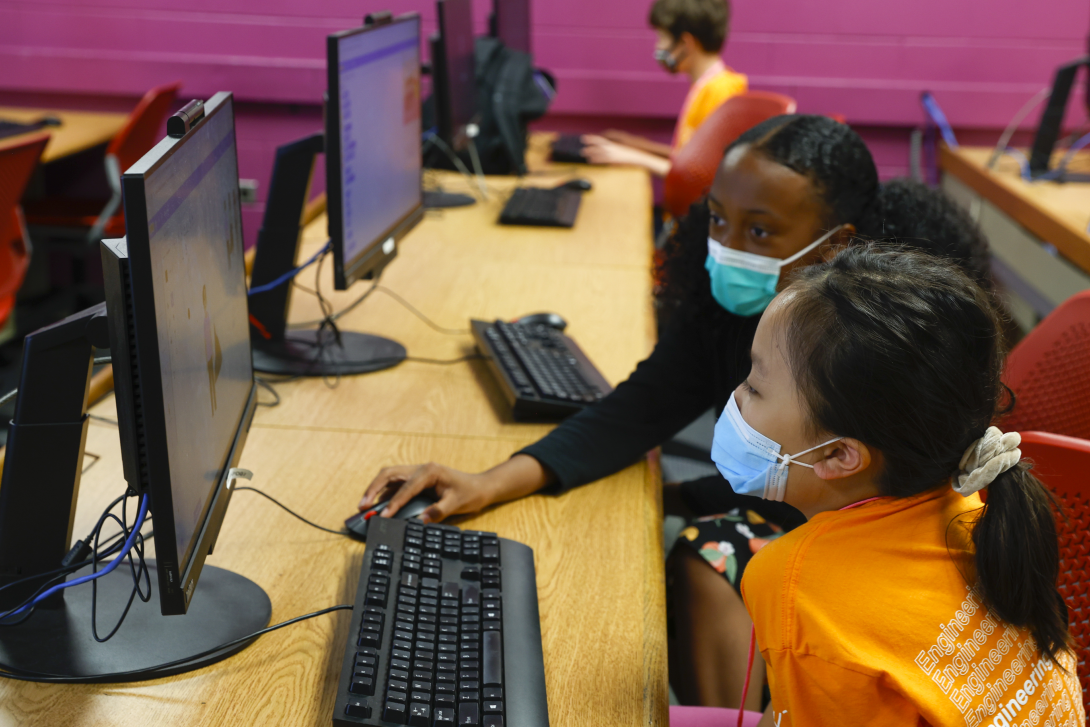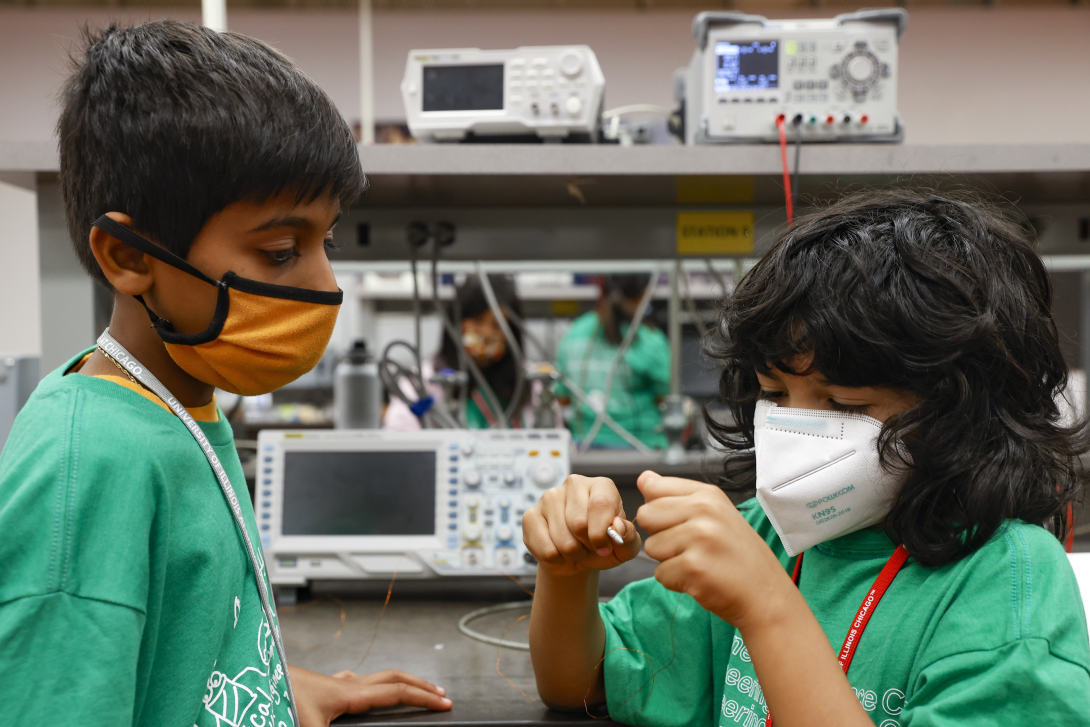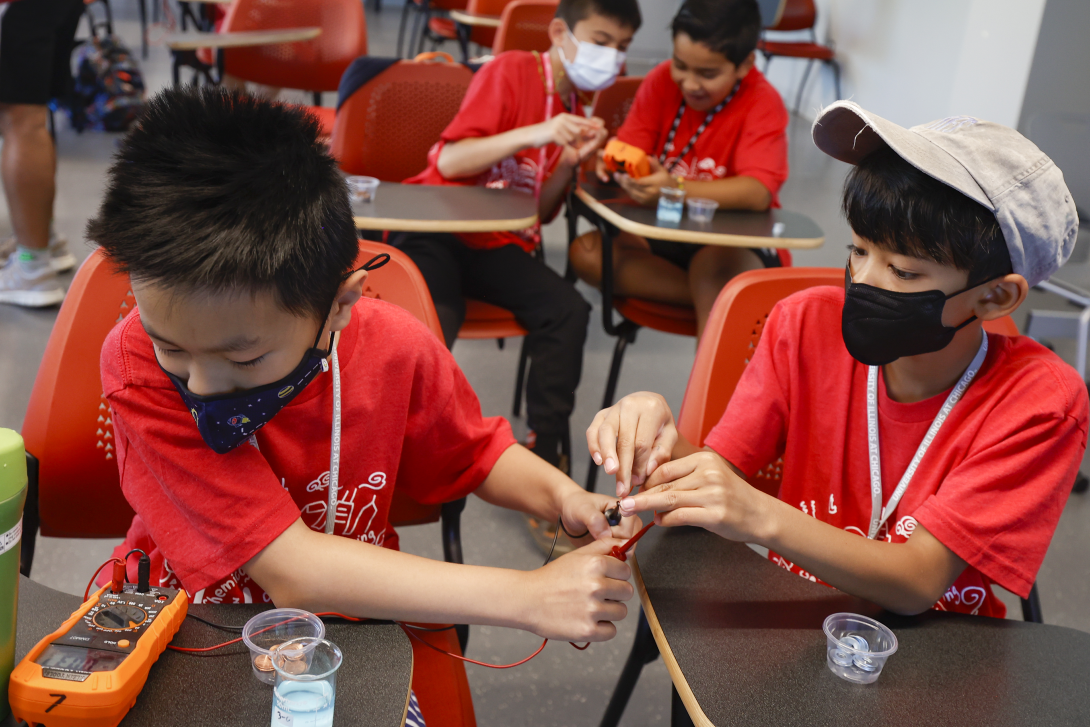Students investigate engineering disciplines at 2022 Engineering Experience Camp

Text block one

As Mason Lee and his sister Isabella tossed a red, yellow, and white plastic beach ball to each other, they counted aloud as they caught it in the air. As they counted to 30, they could feel their breathing increase and their heartbeats getting faster, which was the goal.
As the elementary school students felt their heart rates increase, they looked down at their wrists, where they wore heart rate monitors that they helped put together to keep track of their movements.
“It’s really fun — I like all the activities we do,” said Mason, 10.
The siblings were two of more than a dozen fourth through sixth-grade students taking part in a biomedical engineering session during the first week of this summer’s Engineering Experience Camp at the University of Illinois Chicago.
The weeklong camp exposes children each day to one of five departments within the UIC College of Engineering, which runs the camp. On one day, students may learn about biomedical engineering, then chemical engineering the next day, followed by computer science, electrical and computer engineering, and mechanical and industrial engineering the rest of the week, said Zhinan Wang, clinical assistant professor in the Richard and Loan Hill Department of biomedical engineering.
Text block two

“Every day they are meeting new tutors, they are going to the new space, and overall, after the full week’s experience, they will get a very good taste of what is engineering and what is the big difference between different engineering departments and majors,” Wang said.
Wang is facilitating the camp, which began July 11 and runs until July 29, along with graduate students and other faculty members. Seventh to ninth-grade students take part in the second week of the program, and 10th through 12th-grade students participate in the final week.
The program began in 2019 but had to be curtailed in 2020 and 2021 because of the pandemic. This year has been the camp’s largest, with nearly 300 students registered, Wang said. The program is self-sustaining from tuition paid by parents and guardians, with some help from a National Science Foundation grant.
On a recent visit to the UIC Science and Engineering Labs East building, the sound of laughter and high-energy learning filled the hallways.
Text block three

“They are very energetic, and they want to take things apart and we encourage that. We let them know how to put them back [together]. That is part of the program,” Wang said. “We try to encourage all of the departments to emphasize their uniqueness.”
The hope is to get the students to understand the differences between the various disciplines and be able to express to their parents why they prefer one discipline over another.
Maloo Lozada said her son Lorenzo, a sixth grader, was signed up for the camp, and she planned to enroll his brother, a freshman in high school. She was so interested in the camp that she informed friends and family about the program, including some from out of town because she felt it was a good way for them to learn about the various types of engineering fields.
“The purpose was to expose them to these different types of engineering so they would know if it was what they would be interested in. It’s a very valuable experience, especially at their age range,” Lozada said.
Hermes Lan, 9, and Patrick Neiheisel, 11, worked together in the electrical engineering section to make electrical circuits they would need later to create a mini robot and lightsaber. Hermes and Patrick used paper clips, putty, and wiring.
“They act like a conductor, and we made this special light connected by these wires and clips,” Hermes said. “So far, I like computers, chemical and electrical [engineering] because they’re fun and interesting.”
Text block four

Patrick said his preference was chemical engineering because he has always been attracted to chemistry and has used chemistry science kits to learn more about the discipline.
“We learned from today that electricity can only move one way and that robots can do lots of amazing things, like driving cars and performing surgeries,” Patrick said.
In the mechanical engineering section, Lily Walsh, 11, designed and created key chains using a 3D printer. She was looking forward to using the same 3D printer to create a toy car that she and the other students would equip with an electric motor. She said she could see herself becoming a mechanical engineer when she grew up.
“I love 3D printing,” Lily said. “So far this is my favorite; this would be a very fun career to do.”